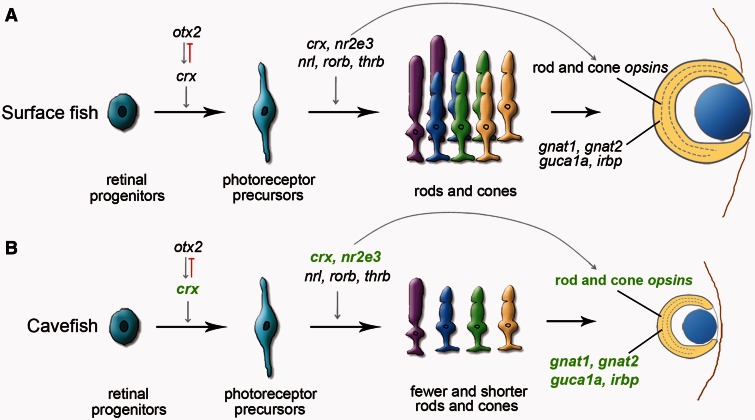Fig. 7.
Proposed model for the evolution of eye degeneration in the cavefish Sinocyclocheilus anophthalmus. (A) Surface fish. (B) Cavefish. In normal vertebrate eyes (A), otx2 upregulates crx, which controls the differentiation of photoreceptor precursors; a number of other factors, including nr2e3, nrl, thrb, and crx itself, help to regulate the differentiation of precursor cells into mature rods and cones that express differentiation products, including gnat1, gnat2, guca1a, and irbp (Hennig et al. 2008; Swaroop et al. 2010). In cavefish eyes (B), transcriptomic data showed downregulation of crx, which would lead to decreased photoreceptor cell differentiation, fewer and malformed photoreceptors, and diminished expression of a series of photoreceptor-specific genes (rod opsins and cone opsins, otx5, gnat1, gnat2, guca1a, and irbp). Because otx2 expression was unchanged in cavefish eyes, another regulatory factor may lie upstream of crx, and/or evolved changes in the promotors of crx paralogs in cavefish may dampen the response of crx to normal otx2 signal. Because fish can regenerate photoreceptors from the CMZ and from Müller glia cells, this pathway likely works throughout life and is thus involved in retinal maintenance. Downregulated genes in cavefish are indicated by green letters. Upregulated genes included several immune-related genes, which may represent response to inflammation associated with eye degeneration.

